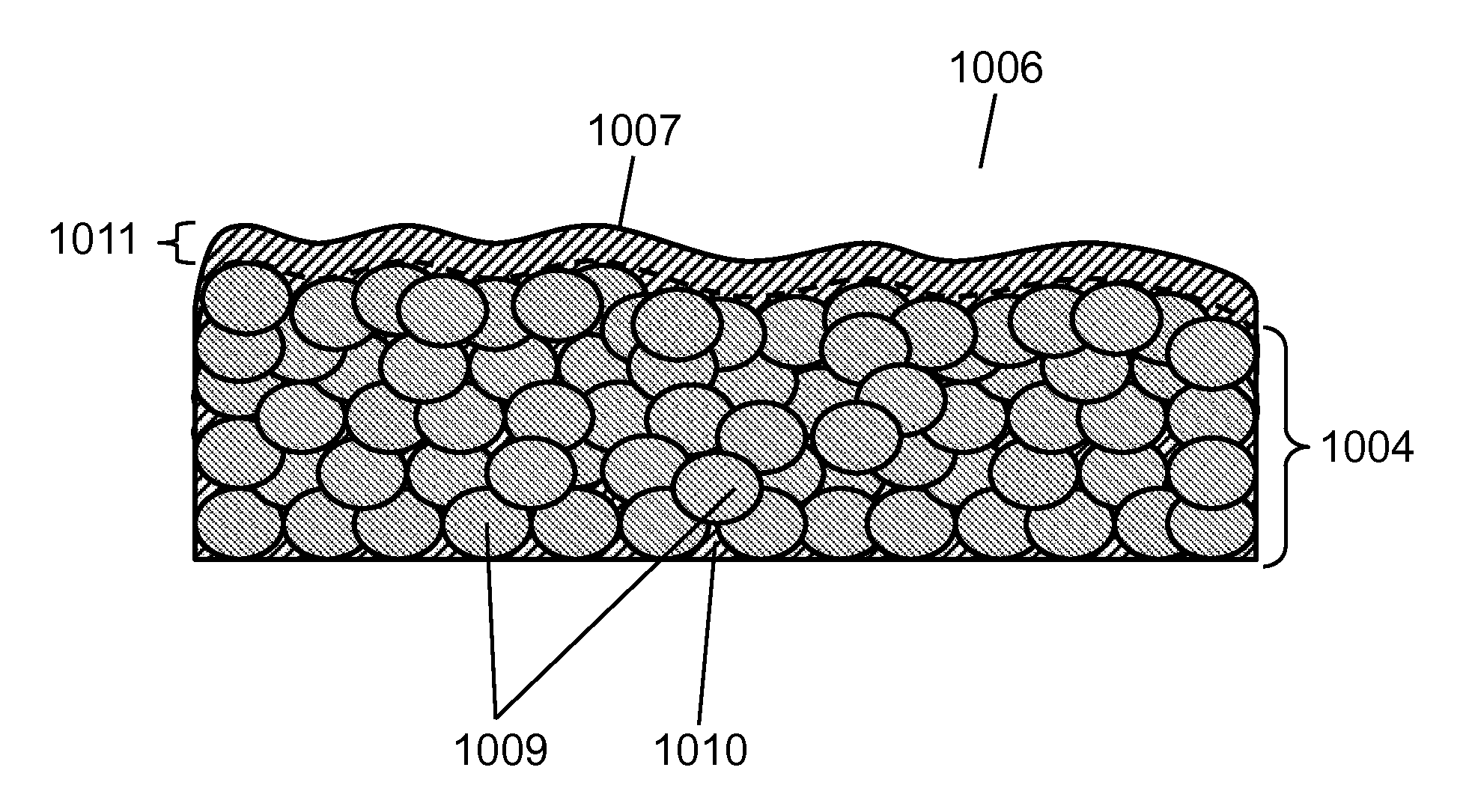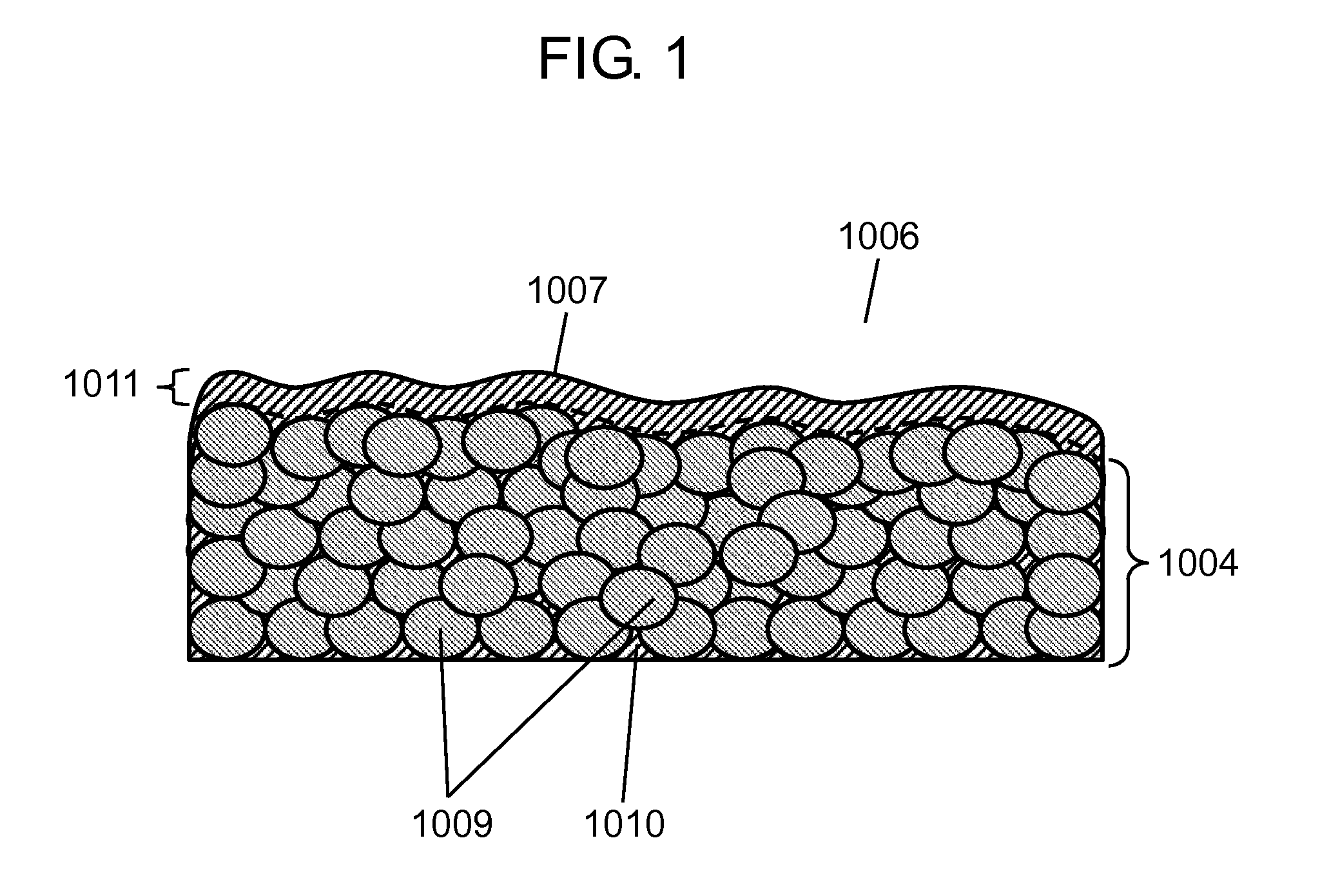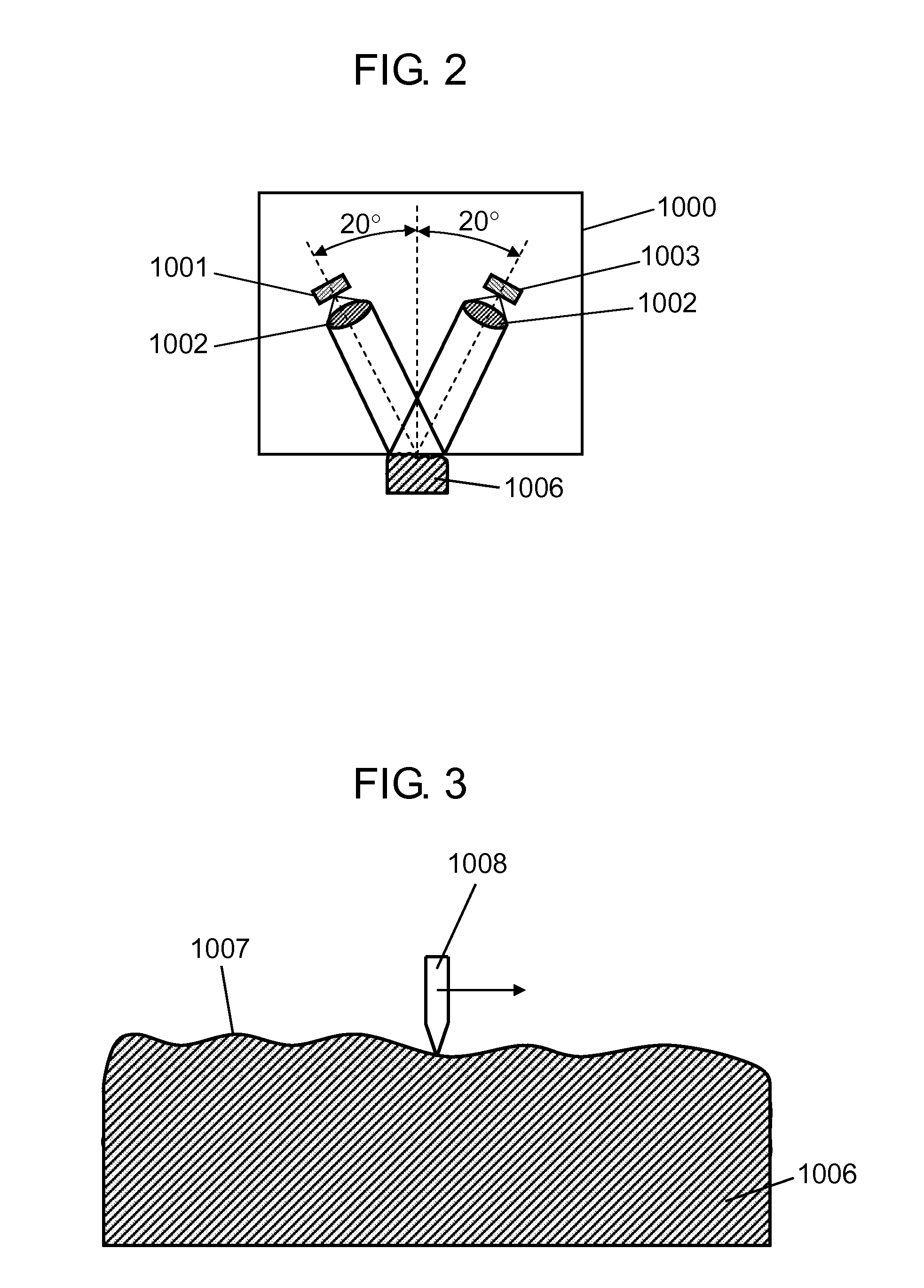Thermoconductive composition, heat dissipating plate, heat dissipating substrate and circuit module using thermoconductive composition, and process for production of thermoconductive composition
a technology of thermoconductive composition and composition, which is applied in the direction of resistive material coating, solid-state devices, synthetic resin layered products, etc., can solve the problems of thermal conductivity, low formability, and large roughness of thermally conductive composition, so as to improve the heat dissipation performance or convenience, improve the adhesiveness between the composition and the metallic plate, and improve the wettability
- Summary
- Abstract
- Description
- Claims
- Application Information
AI Technical Summary
Benefits of technology
Problems solved by technology
Method used
Image
Examples
embodiment 1
[0080]FIG. 1 is a sectional view of a thermally conductive composition in embodiment 1 of the invention.
[0081]Thermally conductive composition 1006 contains thermosetting resin 1010 containing a crystalline epoxy resin, and inorganic filler 1009. Inorganic filler 1009 is contained mainly in main portion 1004. On main portion 1004 is formed surface layer portion 1011 made only of thermosetting resin 1010, or made mainly of thermosetting resin 1010. In FIG. 1, a broken line is shown to distinguish main portion 1004 and surface layer portion 1011 from each other for the sake of convenience. However, a clear interface does not exist between the two, so that main portion 1004 and surface layer portion 1011 are formed to be continuous to each other. In this manner, thermally conductive composition 1006 also contains surface layer portion 1011 formed into a surface layer. In other words, surface layer portion 1011, inorganic filler 1009 and thermosetting resin 1010 each constitute a partia...
embodiment 2
[0198]With reference to FIG. 6, a heat dissipating plate according to an embodiment of the invention will be described hereinafter.
[0199]FIG. 6 is a sectional view of the heat dissipating plate according to the embodiment. Heat dissipating plate 1013 has metallic plate 1012 and sheet-form thermally conductive composition 1006 laid thereon. When the thickness of thermally conductive composition 1006 is set to 0.6 mm or more, reinforced electric insulation can be satisfied. The reinforced electric insulation means a single insulation for making a protection equivalent to or larger than a double insulation against electrocution. The double insulation is composed of a basic insulation and an additional insulation. When the reinforced electric insulation is satisfied as described above, the heat dissipating plate can satisfy the product-safety known in the UL standards, the IEC standards, and others, so that a primary-side electric circuit (for example, a power source circuit) can be for...
embodiment 3
[0231]The following will describe a circuit module of an embodiment of the invention with reference to FIGS. 12 to 15.
[0232]FIG. 12 is a sectional view for describing a situation that heat generating component 1014 is fixed on heat dissipating plate 1013 described with reference to FIG. 6. Heat generating component 1014 corresponds to, for example, an electronic component such as a transformer, a coil or a choke coil, or a light emitting element such as an LED or a semiconductor laser, as well as a power semiconductor (a power transistor, a power FET, a power transistor, a high-power LED, or a high-power laser). In order to fix heat generating component 1014 onto free surface 1007 of thermally conductive composition 1006, a thermally conductive adhesive or the like may be used. As has been described with reference to FIGS. 5A and 5B, free surface 1007 may be processed to form processed surface 1015.
[0233]The surface roughness of processed surface 1015 illustrated in FIG. 5B is desir...
PUM
| Property | Measurement | Unit |
|---|---|---|
| volume fraction | aaaaa | aaaaa |
| volume fraction | aaaaa | aaaaa |
| volume fraction | aaaaa | aaaaa |
Abstract
Description
Claims
Application Information
 Login to View More
Login to View More - R&D
- Intellectual Property
- Life Sciences
- Materials
- Tech Scout
- Unparalleled Data Quality
- Higher Quality Content
- 60% Fewer Hallucinations
Browse by: Latest US Patents, China's latest patents, Technical Efficacy Thesaurus, Application Domain, Technology Topic, Popular Technical Reports.
© 2025 PatSnap. All rights reserved.Legal|Privacy policy|Modern Slavery Act Transparency Statement|Sitemap|About US| Contact US: help@patsnap.com



